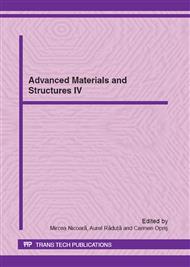p.46
p.52
p.59
p.65
p.70
p.76
p.82
p.87
p.93
The Characterization of Ketoprofen-Hydroxypropyl–β-Cyclodextrin Complex with Modified Drugs Release Properties
Abstract:
Since, anti-inflamatory drugs have a high demand due to increased incidence of pain associated with different pathology; the objectives of this paper are the synthesis, the physicochemical characterization and analysis of the tribological properties for the ketoprofen-cyclodextrin complexes. The analysis of solubility for these complexes was carried out using MathCAD software. Tribological factors were evaluated by the wear resistance of cylindrical tablets containing ketoprofen-cyclodextrin complex, methocel and magnesium stearate. The tablets with ketoprofen-cyclodextrin complexes provide good solubility and wear resistance and these are ideal for preparation of extended release systems like implantable tablets or for orally administration tablets.
Info:
Periodical:
Pages:
70-75
Citation:
Online since:
May 2012
Price:
Сopyright:
© 2012 Trans Tech Publications Ltd. All Rights Reserved
Share:
Citation:


